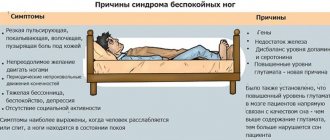This bone formation received its unusual name due to its complete resemblance to a horse saddle of the Turkish design - with high front and rear backs, preventing the rider from falling forward or backward.
This is the name of the bone structure, the existence of which is designed to provide for the needs of the pituitary gland located in its recess - the gland responsible for the state of the entire human endocrine system. Without interfering with some relative mobility of the gland, the shape and volume of the notch in the center of the sella turcica create conditions so that this formation, connected to the lower surface of the cerebrum and connected only by a thin leg-isthmus, cannot move anywhere.
General concept of the sella turcica
The base of the skull, made up of several bones of different structures, in addition to the depressions - the anterior, middle and posterior cranial fossae, also has a central elevated part formed by the body of the sphenoid (or main) bone and its structural components.
In the center of the body of the sphenoid bone there is a depression, or pituitary fossa, limited by bony protrusions: in front - by the anterior inclined processes of the small wings of the sphenoid bone and the tubercle of the saddle in the center, in the back - by the posterior inclined processes of the back of the bone structure. The proximity of the sella turcica not only to the optic nerves, but also to all cranial nerves in general extending from the base of the brain, in some cases, with their pathology, can become dangerous.
Sella turcica in the brain (syndrome): causes, symptoms, treatment
When someone hears about the “empty sella turcica,” he is overcome with bewilderment.
“Empty sella syndrome” is a fancy term for a significant health problem. The disease has difficult to diagnose symptoms and complex treatment, which, however, is not always necessary.
general information
diagram of the location of the sella turcica in the human brain
Most often, the first questions of people who first heard about the sella turcica are mocking interrogative comments: “why was it called that?”, “What is it?”, “Why is it dangerous?”, so let’s figure it out.
The sella turcica in the brain is an anatomical formation in the human skull, namely in the sphenoid bone. Its central part contains the cavity in which the pituitary gland is located, also called the pituitary fossa.
Normally, the sella turcica diaphragm, which consists of the dura mater, separates the fossa and the subarachnoid space. There is an opening in it where the pituitary stalk is located.
Thanks to this “construction,” the pituitary gland and hypothalamus are connected.
Empty sella syndrome is a disease in which the brain prolapses (protrudes) into the cavity described above. The pituitary gland is in a compressed state.
“Consequences of lack of timely treatment - neuroendocrine, neurological and ophthalmological abnormalities”
Now that we have understood the concept of “sella turcica” and what it is, it is worth taking a closer look at the terms used to describe the disease:
- The pituitary gland is an endocrine gland responsible for the production of hormones, metabolism and much more;
- The hypothalamus is a region of the brain (intermediate) that controls the pituitary gland, connecting to it with a stalk. Thanks to its activity, the state of hunger, sleep and other sensations are formed.
Based on the description of the parts of the brain whose activity is disrupted by empty sella syndrome, we can understand that the disease destroys the instincts that people consider an integral part of their being.
The emerging empty sella turcica begins to slowly destroy established patterns of behavior, but the patient does not notice this, considering violations in his behavior to be the norm.
It is precisely because the symptoms are not perceived by the patient as a deviation from the norm that diagnosis of the disease and its treatment are so difficult.
History of PTS syndrome
The name “Empty sella syndrome” was proposed by pathologist V. Bush while examining corpses in the morgue.
Carrying out a standard autopsy, he noticed that among the 700 corpses that he opened, about 40 shared an identical pathology - the pituitary gland was “smeared” over a hole that looked empty.
He did not know what symptoms were accompanied by an empty sella turcica of the brain during life, because he had not observed deceased patients during their lifetime and did not have the resources to study the deviation in detail.
The doctor described its symptoms, gave it a name and put it aside. 20 years later (in 1968), another group of researchers published materials studying the problem, which described the symptoms and types of the disease. According to published data, hollow sella syndrome (PTS syndrome) affects every 10th person.
Even today, the emerging PTS syndrome is very difficult to identify. If there are no relatives near the patient who have known him for a long time, then there is no one to notice changes in the patient’s behavior, and he himself is incapable of this.
Typically, pathology is diagnosed by conducting research on another disease, for example, MRI.
It is extremely rare that PTS syndrome develops abruptly, which is accompanied by a significant deterioration in living conditions noticeable to the patient.
Causes of the disease
The most common causes that help the disease develop are genetic pathologies and external factors (companion diseases, injuries, surgical interventions). They can be classified as follows:
- hormonal changes associated with natural biological processes, such as puberty, taking hormones (contraceptives), pregnancy, menopause, and other life events that may be accompanied by hormonal “jumps” that will ultimately lead to deformation of the pituitary gland.
- Cardiovascular diseases are frequent companions of PTS. Here a simple chain is triggered - increased blood pressure provokes disorders in the brain; as a result, the diaphragm of the sella turcica can press on the pituitary gland, and other symptoms will appear. At the same time, problems of the pituitary gland can disrupt the internal hormonal regulation of the body, which leads to disturbances in the nutrition of the heart and changes in cardiovascular rhythm.
- As we see, heart problems are insidious companion diseases; they can become both a cause and a consequence of a person’s PTS problem;
- Excess weight and taking antibacterial drugs are also insidious; these factors can either contribute to the developing disease or be its consequence.
As you can see, there can be a great many reasons for the development of empty sella syndrome.
Clinical manifestations
PTS symptoms can be described from several perspectives.
If we consider the question of the general clinical manifestations of empty sella syndrome, they are:
- neurological;
- ophthalmological;
- endocrine.
Symptoms can occur individually or all together, it doesn’t matter, the main thing is that they bring chaos to the functioning of the human body.
Typically, disorders associated with the visual organs are combined with neurological disorders or an enlarged thyroid gland.
Neurological abnormalities, following the name, reflect altered processes of brain activity that affect the patient’s quality of life:
- varied, frequent headaches without specific location and duration;
- constant low-grade fever;
- pain in the limbs and abdomen, reminiscent of cramps or colic;
- attacks of tachycardia;
- attacks of fear, anger, sudden mood swings.
Ophthalmological symptoms are characterized by deterioration of the patient's vision.
And this happens as follows:
- loss of visual fields;
- temporary darkening (fogging);
- swelling of the conjunctiva;
- pain when focusing;
- splitting of objects.
Endocrine symptoms indicate the occurrence of hormonal disorders:
- enlargement of the thyroid gland;
- diabetes insipidus;
- impotence;
- menstrual irregularities, etc.
In the vast majority of patients, empty sella syndrome does not provoke clear clinical signs, therefore, if one of the symptoms appears, an MRI of the sella turcica will be done last, attributing the changes to other diseases.
This means that he will be the last to be treated, giving the disease the opportunity to worsen.
Complaints and objective research
Classical medicine believes that there are no clear reasons to send a patient for an MRI of the sella turcica; a doctor should pay attention to this research method only if the patient has had a large number of traumatic brain injuries or a large number of pregnancies.
Information that the patient already had a pituitary tumor or a pineal cyst, which was treated with radiation therapy or surgery, can also lead the doctor to think about problems in this area.
If the doctor notices that the patient’s clinical manifestations of the disease belong to such different areas of medicine, he can also send the patient for a control MRI of the brain. To identify the disease, laboratory and instrumental studies are used.
- Laboratory diagnosis is based on a blood test, the doctor assesses the amount of hormones in it. But this technique has a drawback: with PTS syndrome, the result may show complete compliance of the amount of hormones with the norm, while the disease will develop successfully.
- Instrumental diagnostics is a more accurate method of identifying the disease. To clarify the situation, a tomograph is used, it can be either a computer scanner or a magnetic resonance scanner, this does not matter much, however, computed tomography is somewhat more accurate. Considering the price of this study, doctors often use a more affordable method - targeted radiography, which is done simply for self-soothing, because it is impossible to objectively state the presence of a problem from an X-ray image.
Of course, in each specific case, a different algorithm for diagnosing empty sella syndrome is selected.
Treatment
Treatment of the sella turcica problem in this case aims to correct the deviations that the disease has led to.
An illness accompanied by a deterioration in the quality of life cannot be fully cured, so they are fighting against its companion diseases.
It is believed that if an empty sella turcica of the brain is discovered by chance and does not interfere with the patient, then there is no need for treatment. Such patients are simply registered at a dispensary in order to promptly identify malignant changes. In other cases, drug or surgical treatment is used.
Drug therapy is associated with the restoration of hormonal levels - the missing hormones are partially introduced into the body until the causes of the disease are eliminated.
In addition to hormonal medications, the doctor may prescribe sedatives, painkillers and other symptomatic medications.
Surgical treatment is used in more severe cases and is mainly associated with solving the problem of bone tissue.
So, if a cyst appears in the area of the fossa (this, by the way, may be a special case of a pineal gland cyst) compressing the pituitary gland, symptoms of cerebrospinal fluid leakage occur, or sagging of the optic nerve intersection is diagnosed, surgical intervention is performed.
Conclusion
PTS syndrome, as mentioned, occurs in 10% of people. Modern medicine is capable of adequately curing the consequences of the disease and stopping its development.
With early diagnosis and timely symptomatic treatment, the prognosis is quite favorable.
Source: https://golovnie-boli.com/bolezni-golovnogo-mozga/turetskoe-sedlo.html
About the building
The pituitary gland (or simply the pituitary gland, or the inferior medullary appendage) is not directly adjacent to the bony base of the sella turcica. Being in a semi-suspended state on the feeding leg that communicates with the hypothalamus, it is simultaneously cut off from it by the diaphragm. The latter is a connective tissue structure - a separate plate of the dura mater, in which there is a hole for the passage of the connecting pedicle. The diaphragm is attached to the bony projections that form the anterior and posterior walls of the sella.
The condition of the pituitary gland can be affected by both the size of the recess containing it and the presence of pathology in neighboring organs.
The own dimensions of the gland with a mass of 0.5 g are:
- anterior-posterior 5-13;
- upper-lower 6-8;
- transverse 3-5 mm.
The dimensions of the sella turcica may have the following limits:
- the distance between the front and back walls is from 9 to 15;
- maximum distance from the deepest point to the diaphragm level is from 7 to 13 mm. The gap between the boundaries of the pituitary gland and the walls of the sella should not be less than 1 mm.
In turn, the shape of the saddle recess can be:
- round;
- deep;
- flat.
The first one is optimal for placing the glandular organ. In the second and third options (if the anteroposterior size predominates over the depth, or vice versa), its position becomes not so favorable for the blood supply, on which both the condition of the gland and its secretory activity depend.
The paired formations adjacent to the sella turcica are:
- optic tract;
- the maxillary and mandibular nerves, leaving the skull respectively through the round and oval openings at its base;
- the middle meningeal artery, penetrating the midcranial fossa through the foramen spinosum;
- III, IV and VI cranial nerves leaving the skull through the superior orbital fissure.
On the sides, in close proximity to the pituitary fossa, there are pyramids with internal auditory openings for the entry of the facial nerves and the release of the vestibulocochlear nerves. The dorsum sella, in turn, serves as the beginning of the clivus, on which the pons and medulla oblongata are located, on either side of which the cerebellar hemispheres are located.
Empty sella turcica: causes of the syndrome, signs, diagnosis, how to treat
Empty sella syndrome is a complex of clinical and anatomical disorders that arise due to insufficiency of the sella diaphragm. In the temporal region there is a peculiar obstacle that prevents the penetration of cerebrospinal fluid into the subarachnoid space.
It is in this cavity that the pituitary gland is located, which regulates the level of hormones, metabolism and accumulation of substances in the body, and is responsible for human reproductive functions. If the cerebrospinal fluid enters the sella turcica without any obstruction, the pituitary gland begins to deform.
Often it finds itself pressed against its own bottom and walls, which leads to disruption of its functioning.
The syndrome was discovered in 1951 by V. Bush, who studied the causes of death of more than 700 people.
40 of them (34 were women) had practically no diaphragm at all, and the pituitary gland lay along the bottom of the “pit” of the sella, which seemed completely unfilled - empty.
The anomaly gets its name from the special appearance of the sphenoid bone, which actually resembles a saddle needed for horse riding.
Most often, obese women over the age of 35 suffer from empty sella syndrome (ESTS). There may also be a genetic predisposition to the disease. That is why scientists divide the anomaly into 2 types:
- Primary syndrome that has been inherited;
- Secondary – arose as a result of a malfunction of the pituitary gland.
The pathology can be asymptomatic or manifest itself as visual, autonomic, or endocrine disorders. Along with this, the psycho-emotional state of the patient often changes.
Causes of the anomaly
Empty sella syndrome has not yet been fully studied by scientists. It has only been proven that pathology can appear as a result of surgery, radiation therapy, mechanical damage to brain tissue or diseases of the pituitary gland.
Experts suggest that one of the reasons for the development of SPTS may be insufficiency of the diaphragm, which separates the space of the sphenoid bone from the subarachnoid cavity. At the same time, it excludes the small “hole” where the pituitary stalk is located.
During menopause or pregnancy in women, during puberty, or any similar conditions that are accompanied by a restructuring of the endocrine system, hyperplasia of the pituitary gland itself may occur, which will also lead to pathology. Sometimes the disorder is caused by hormone replacement therapy or contraceptives.
Any variant of congenital anomaly in the structure of the diaphragm can cause the development of a dangerous syndrome. But along with them, the following factors can also affect the patient’s condition:
- Rupture of the suprasellar cistern;
- Increased internal pressure in the subarachnoid cavity, increasing the effect on the pituitary gland, for example, with hypertension and hydrocephalus;
- Reduction in the size of the pituitary gland and the ratio of volumes to the sella;
- Problems with blood circulation in benign tumors.
Types of anomaly
The classification of this condition is based on the factors that led to its development. Doctors distinguish between primary and secondary forms. The first appears without a reason, that is, it is inherited. The second may be a consequence:
- Various infectious diseases that somehow affect the brain;
- Brain hemorrhage or inflammation of the pituitary gland;
- Radiation, surgery or drug intervention.
Symptoms of SPTS
Usually the anomaly occurs unnoticed and does not cause any discomfort to the patient. Often, the syndrome is discovered by chance during a routine X-ray examination. The pathology occurs in 80 percent of women over the age of 35 who have given birth. Approximately 75% of them are obese. However, the clinical picture of the disease can vary dramatically.
Most often, the syndrome reduces a person’s visual acuity, causes a generalized narrowing of peripheral fields, and bitemporal hemianopsia. Patients also complain of frequent headaches and dizziness, lacrimation, and fogginess. In rare cases, swelling of the optic disc is observed.
Many nasal diseases result from rupture of the sella, which occurs due to excessive pulsation of the cerebrospinal fluid. In this case, the risk of developing meningitis increases several times.
Almost all endocrine disorders lead to pituitary dysfunction and the occurrence of SPTS. Among them are both rare genetic abnormalities and:
- increased, decreased levels of tropic hormones;
- excessive secretion of prolactin;
- metabolic syndrome;
- dysfunction of the anterior pituitary gland;
- increased production of adrenal hormones;
- diabetes insipidus.
The following disorders can be noticed from the nervous system:
- Regular headache. Occurs in approximately 39% of patients. Most often, it changes its location and strength - it can go from mild to unbearably regular.
- Disorders in the functioning of the autonomic system. Patients complain of surges in blood pressure, dizziness, spasms in various organs, and chills. They often lack air, feel unreasonable fear, and are overly anxious.
Treatment of pathology
If you suspect the occurrence of SPTS, you should definitely consult a therapist. Based on the patient's complaints, test results and various studies, the doctor will send the patient to one of the following doctors, who will treat him. This could be an ophthalmologist, neurologist or endocrinologist.
The choice of treatment methods depends on the main symptoms of the pathology. The specialist must correct disorders that arise as a result of visual impairment or the functioning of the nervous and endocrine systems. The clinical picture of the disease and the severity of the anomaly help to choose the truly correct path of treatment: through medications or surgery.
If the syndrome does not cause much discomfort and does not manifest itself in any way, then the patient does not need treatment for this disease. In this case, patients only need to register, monitor their well-being and regularly undergo all the necessary examinations aimed at monitoring their condition.
Drug treatment
If laboratory tests have revealed a deficiency of any hormone in the body, or even a whole group of them, drug therapy will be aimed at hormonal replacement from the outside. That is, the patient will have to take a course of contraceptives for some time.
In case of disorders of the autonomic system, the patient must take sedatives, painkillers, as well as medications that normalize blood pressure.
Surgery
This type of therapy is used in rare cases, usually only when there is a threat of vision loss. Thanks to surgery, it is possible not only to restore the diaphragm, but also to remove a dangerous tumor. Indications for the operation also include:
- Sagging of the optic nerves into the cavity of the diaphragm.
- Leakage of cerebrospinal fluid through the bottom of the subarachnoid cavity. To eliminate liquorrhea with muscle, tamponade of the sphenoid saddle is performed.
It was revealed that treatment of pathology with traditional medicine does not bring any improvement. In this way, you can only influence the signs of an anomaly.
Experts advise following a healthy lifestyle: exercise, eat only healthy foods and stick to the most comfortable daily routine.
In this way, you can not only prevent the occurrence of complications of the syndrome, but also get rid of the accompanying signs of the disease.
Prevention
There is still no special prevention for the syndrome, therefore it is almost impossible to prevent the occurrence of the pathology. The main thing is to try to be careful, avoid various injuries, mechanical injuries to the brain, not neglect the treatment of infectious, inflammatory and intrauterine diseases, and also prevent the development of inflammation of the pituitary gland and the formation of blood clots in it.
Forecast
About 10% of the world's inhabitants have the syndrome. It can occur either in a latent form or with a fairly large number of signs accompanying the disease. Sometimes such symptoms can significantly reduce the patient’s quality of life. The prognosis directly depends on the severity of the disease and its clinical manifestations.
Most often, patients with the syndrome do not even suspect the presence of the disease, from which we can conclude that the prognosis is only favorable. But stories are also familiar with opposite situations, when patients have to take medications all their lives to improve their well-being and fight for their health.
Although in this case, to improve well-being, it is enough only to eliminate the symptoms associated with the disease.
: empty sella syndrome – program “About the Most Important Thing”
Source: https://sindrom.info/pustoe-tureckoe-sedlo/
About the functions performed
It is traditionally believed that the main task of the existence of this structure is to keep the pituitary gland in a stable and comfortable position for it. But these are not all its functions.
The bony formation of the base of the skull, the sella turcica, serves as a dividing shaft between all three cranial fossae with the organs located in them - parts of the nervous and vascular system.
In addition, its posterior back is the substrate for the medulla oblongata and the pons, while the anterior one is for the area of the optic nerve crosshair (chiasma opticum).
Clinical manifestations
Typical symptoms:
- tumor of the sella turcica is a hormonally active adenoma, manifests itself as acromegaly
- Cushing's syndrome
- Galactorrhea
- Infertility
- Changes in laboratory parameters (increased levels of prolactin, ACTH, STH)
- These changes may be minor at the time of initial diagnosis (microadenoma)
- Other tumors of the sella region:
- The cardinal symptom is homonymous hemianopia, due to compression of the optic chiasm
- Lesions of other cranial nerves are rare
About possible types of pathology
These include:
- change in size (and, accordingly, volume) of the central cavity, both in the direction of increase and decrease;
- excess pressure in the recess of the sella turcica;
- calcification of its cavity;
- deviations in the level of bone pneumatization (air content in bone cavities) both in the direction of its absence or decrease, and in the direction of its redundancy.
In addition to the anomalies in the size of the sella turcica notch accommodating the gland, the condition of the diaphragm of this bone formation itself is important.
The greatest significance for the pituitary gland is the threat from above, in the form of a mass of cerebrospinal fluid hanging over it, from which it is separated only by the “roof” of the diaphragm.
The diameter of the opening of the diaphragm itself is not a constant value - due to the presence of muscle fibers in its composition, it can change, which affects the condition of the gland and the nervous and vascular formations located next to it.
In addition to the diameter, the general condition of this extremely flexible and pliable septum that separates the pituitary gland from the subarachnoid space around the cerebrum, filled with cerebrospinal fluid, is also important. It may have either an abnormal structure or thickness, or attach to the bones in the wrong places.
In the case of thinning, underdevelopment of the diaphragm, or an opening in it that is too wide, it may be forced into the cavity by a mass of cerebrospinal fluid along with the soft membrane of the brain, which is fraught with varying degrees of compression of the pituitary gland. In the case of its most severe compression, they speak of an “empty” sella turcica, implying the absence of a normal pituitary structure due to flattening of the organ - the cavity is filled with cerebrospinal fluid with the remains of gland tissue and the optic nerves pressed here (since they are located directly above the saddle diaphragm).
Sella turcica syndrome in the brain: signs, treatment, consequences
The sella turcica is a branch of the sphenoid bone that performs a number of vital functions.
It is located below the hypothalamus together with the venous sinus and carotid arteries, on the work of which the normal blood supply to the brain depends.
Empty sella syndrome is distinguished, in which the organ is absent altogether or formed without a diaphragm. In the presence of this pathology, a number of neuroendocrine disorders may develop.
Why does sella turcica syndrome occur?
Primary and secondary disorders are possible. In the first case, the pathology forms without obvious predisposing factors. Secondary syndrome develops when there is a disease of the pituitary gland or hypothalamus, since disorders can occur due to incorrectly adjusted treatment.
The reason that leads to the disease is the incomplete development or absence of the sella diaphragm. In this case, there is a risk of placing other parts of the brain closer to the sella turcica, which causes a number of disorders.
In the presence of severe disorders, the pituitary gland enlarges in the vertical direction and fits tightly to the walls and lower part of the saddle.
In medical practice, a fairly large number of factors have been diagnosed that provoke the appearance of pathology:
- High blood pressure . Occurs with failure of vital organs, tumor development, and possible compression of the sella turcica in the brain. Also, the risk of this disorder increases in the presence of serious injuries and hypertension.
- Increase in size of the pituitary gland . Typically, such disorders occur if a person uses an excessive amount of contraceptives or uses them for a long time.
- Endocrine changes . Typically, such deviations occur in adolescence, during pregnancy, as well as thoughtless or abrupt interruption.
- Tumors localized in the brain , which are characterized by the formation of a necrotic area. Performing surgery on a specific area more than once increases the risk of developing empty sella syndrome.
When carrying out diagnostic measures, identifying the cause that provoked the development of pathology, doctors determine the type of syndrome. This aspect is very important, since specific types of syndrome are formed as a result of the action of several factors. Primary syndrome occurs with abnormal development, atony of the walls of the sella turcica in the lower part.
Primary syndrome is provoked by the following negative factors:
- When the activity of the heart and lungs is insufficient, pressure increases, which leads to osteoporosis of the sella turcica.
- Hyperplasia of the pituitary gland, which often develops a lot of endocrine disorders.
- Formation of areas filled with fluid. Necrotization of part of the pituitary gland and the appearance of a tumor are possible.
The secondary syndrome differs from the primary one. The disease occurs due to exacerbation of hypothalamic-pituitary type disorders. Secondary syndrome occurs with the formation of various diseases that are related to the functioning of the pituitary gland. Also, this pathology often occurs during surgical interventions, in case of unsuccessful surgery or in the presence of serious contraindications.
Symptoms
Signs indicating the development of this pathology are different. Doctors take a set of tests from the patient to determine the degree of pathology, as well as the type of deviation. A person’s appearance and behavior are reflected in hormonal disorders and pathologies in the activity of the pituitary gland.
In most cases, empty sella syndrome is manifested by the following symptoms :
- Headaches that occur on certain days of the week or at specific times;
- Double vision;
- Inability to clearly see the picture of what is happening, read small text;
- Patients indicate the formation of fog before the eyes;
- Shortness of breath and paroxysmal pain;
- Dizziness;
- Frequent fever;
- Severe weakness, increased fatigue;
- Inability to perform usual activities or exercise;
- Pain syndrome in the chest;
- Increased pressure;
- Dry skin;
- Incorrect composition of nails.
Ophthalmic symptoms
Often, with sella turcica syndrome, people turn to ophthalmologists. At the appointment, the following disorders are diagnosed:
- Diplopia;
- Violation of visual fields;
- Pain syndrome when trying to look to the sides, accompanied by the release of tears, migraine disorders;
- The appearance of blackheads;
- Fog before the eyes;
- Edema phenomena.
Endocrine disorders
When an excessive amount of pituitary hormones is produced, the following abnormalities appear:
- Irregular menstruation;
- Hyperplasia of the thyroid gland;
- Manifestation of symptoms of acromegaly;
- Diabetes insipidus;
- Pathologies associated with metabolic processes.
Radiography
If an empty sella turcica is suspected, an X-ray of the skull is not always performed, since it does not guarantee a clear picture of the disorder for subsequent diagnosis.
If this diagnostic test is prescribed, doctors often suspect the presence of consequences of injuries, prolonged sinusitis, and reveal the formation of free space at the location of the sella turcica.
MRI is performed to clarify the diagnosis.
MRI
It is the most accurate method for making a diagnosis. The resulting images are of excellent quality and help to accurately determine the state of brain cells and view minor damage.
If the doctor cannot accurately determine the location of the pathology, an MRI with the introduction of a contrast agent is prescribed. In this case, during the procedure, a special solution is injected intravenously, allowing the condition of organs and cells to be seen in high quality.
The area where the empty sella turcica is located will be brightly highlighted.
Drug treatment
If an empty sella turcica is detected during the diagnosis of another pathology, no special treatment is performed. When this syndrome does not affect the general condition of the patient and does not provoke the appearance of unpleasant sensations, there is no need to eliminate it. It is advisable to undergo regular examinations with a doctor in order to promptly notice possible deterioration of the condition.
In other situations, the following methods are used:
- In case of disturbances in the production of hormones, it is necessary to undergo a number of additional studies to identify the deficiency of certain substances. Based on the data obtained, special therapy is prescribed, the purpose of which is the artificial supply of missing hormones. Both intravenous injections and oral medications are used.
- If asthenic disorders or problems at the vegetative level are observed, the goal of treatment is to eliminate negative symptoms. Doctors select the most appropriate sedatives and painkillers for specific patients, and also prescribe complex therapy to lower blood pressure and eliminate the risk of its uncontrolled rise.
About the causes of dysfunction
The reasons for disorders of the function of the bone pituitary bed can be:
- congenital defects - deviations from the proper size and shape due to genetic characteristics;
- disorders of mineral and microelement metabolism, leading to rarefied bone tissue or its destruction;
- systemic or local circulatory disorders;
- intracranial hypertension;
- the presence of a tumor process causing deformation of the bone cavity.
Depending on the underlying cause, the degree of dysfunction can be significant or subtle. Thus, if a malignant tumor is characterized by rapid growth with rapid destruction of bone and an equally rapid increase in symptoms, then with metabolic diseases (endocrine pathology, blood diseases, immuno- and other deficiency conditions, chronic debilitating infectious processes in the body), the pathology is insignificant in nature and requires long and meticulous study.
Due to the peculiarities of the localization of the sella turcica, there is also the possibility of its damage due to a fracture of the base of the skull.
A separate category of causes is the condition of both the seat diaphragm itself and its individual structures. In addition to its atrophy or underdevelopment, small thickness or improper attachment to the bones, the reaction of the diaphragmatic muscle fibers to the state of intoxication of the body, or the onset of fear, anger or other negative emotion from being in a stressful situation, to which they respond with spasm (up to twisting of the diaphragm), is important. .
Diagnostics
Magnetic resonance imaging (MRI) is the most effective means of detecting empty sella syndrome. The diagnosis can be accurately made using computed tomography (CT). Modern medical examination technologies make it possible to accurately determine the size of the pituitary gland and identify deviations from the norm, which greatly facilitates further treatment.
It is not uncommon for situations in which empty sella syndrome is discovered by chance: the patient is prescribed a CT or MRI due to suspicion of other diseases, and during the examination, pathology of the pituitary gland is also detected. The syndrome itself may not even have pronounced symptoms and may not cause obvious discomfort to a person.
A targeted examination is prescribed for obvious symptoms, for example, diabetes insipidus or an enlarged thyroid gland in combination with vision problems.
In addition to computer diagnostics, a blood test is performed to identify hormonal disorders, as well as an x-ray, although the latter method may require additional examination to make an accurate diagnosis, so as not to start treatment in a timely manner and avoid consequences.
We bring to your attention a short educational video about empty sella syndrome:
Symptoms of sella turcica pathology
Considering that its main task is to protect the lower appendage of the brain, any deviation from the norm in the size, shape, structure of the sella turcica (especially in combination with the factor of intracranial hypertension) leads to dysfunction of the pituitary gland, which results in a variety of symptoms:
- neurological;
- endocrinological;
- visual.
The first group of symptoms includes the presence of unmotivated:
- headaches, varying in nature and intensity, localization, depending on the time of day and other factors;
- asthenic manifestations (in the form of rapid, unjustified fatigue and causeless weakness, intolerance to even small physical and mental stress);
- autonomic dysfunction (up to autonomic crises and panic attacks) with arterial hypertension, abdominal and heart pain, diarrhea, shortness of breath, heart rhythm disorders, sweating and cold extremities;
- fluctuations in the emotional background: from apathy to anger, or tearfulness, or unbridled gaiety.
The severity of endocrine symptoms can vary from subtle signs to significant clinical manifestations and depend on the degree of activity or insufficiency of production of a particular hormone by the pituitary gland. Therefore, hormonal imbalance can manifest itself:
- obesity;
- decrease or excess activity of the thyroid gland (in the first case, drowsiness combined with swelling, constipation, dry skin, brittle nails and hair, in the second, emotional upsurge with erratic feverish activity, palpitations, trembling hands, etc.);
- manifestations of acromegaly - gigantism both in relation to height and in relation to the size of individual parts of the body;
- symptoms of hyperprolactinemia related to disorders in the sexual and reproductive sphere (in the form of instability of the menstrual cycle, female and male infertility, male gynecomastia - an increase in the size and weight of the mammary glands);
- disorder of the adrenal glands in the form of Itsenko-Cushing syndrome with a characteristic type of obesity, dry skin and the presence of purplish-blue stripes on the skin of the abdomen, thighs, mammary glands, with excess blood pressure and hair growth on the body, mental disorders (depression or aggressive manifestations) and other symptoms characteristic of the pathology.
Visual symptoms may include manifestations of pathology felt by the patient in the form of:
- blurred vision with a “fog” effect, blurred objects;
- double vision;
- decrease in acuity or varying degrees of limitation of visual fields (from individual black spots to loss of half of the visual fields);
- pain in the orbits (behind the eyeballs).
When examined by an ophthalmologist, the fundus of the eye is characterized by hyperemia and swelling of the optic discs.
Symptoms
Experts note that the symptoms that may accompany an empty sella turcica are varied and depend on the type and degree of disturbance in the function of hormone secretion and the functioning of the pituitary gland. As a rule, the development of the disease is accompanied by the following symptoms:
- regular headaches;
- double vision;
- blurriness, fog before the eyes;
- frequent shortness of breath;
- dizziness;
- increased body temperature;
- fast fatiguability;
- decreased performance, physical endurance;
- pain in the thoracic region;
- high blood pressure;
- dry skin;
- brittle nails.
Depending on the nature of the symptomatic manifestations, a person may contact a specific specialist. The following signs become the basis for contacting an ophthalmologist:
- diplopia;
- macular degeneration – loss of visual fields;
- retrobulbar pain - painful sensations when moving the eyeballs, often accompanied by lacrimation, migraine;
- photopsia – black dots before the eyes;
- blurred vision;
- chemosis – swelling of the conjunctiva of the eye.
Neurological
Neurological symptoms include the following:
- constant low-grade fever;
- attacks of tachycardia, shortness of breath, chills, fainting;
- irritability, emotional depression, unreasonable fear;
- regular non-localized headaches;
- spastic pain that occurs suddenly, limb cramps;
- changes in blood pressure.
Manifestations of the development of pathology on the part of the endocrine system may include the following signs that are the result of an excess of pituitary hormones:
- disruptions of menstrual cycles (in women);
- enlarged thyroid gland;
- sexual dysfunction;
- acromegaly - expansion of body parts;
- diabetes insipidus;
- metabolic problems.
On treatment issues
Treatment methods for sella turcica dysfunction may include treatment:
- medicinal;
- surgical;
- combined.
The first direction includes the correction of general somatic disorders that have led to compression of the pituitary gland due to changes in indicators of the constancy of the internal environment of the body. It implies:
- restoration of normal intracranial pressure and blood pressure indicators;
- elimination of deficiency conditions (normalization of hormonal and other forms of tissue metabolism);
- restoration of lymph and blood circulation in the body (especially at the microcirculation level).
All of these measures are successful only with a slight degree of dysfunction of the sella turcica. The presence of tumors or other destructive factors requires a microsurgical operation in this area, followed by drug correction in the postoperative period.












